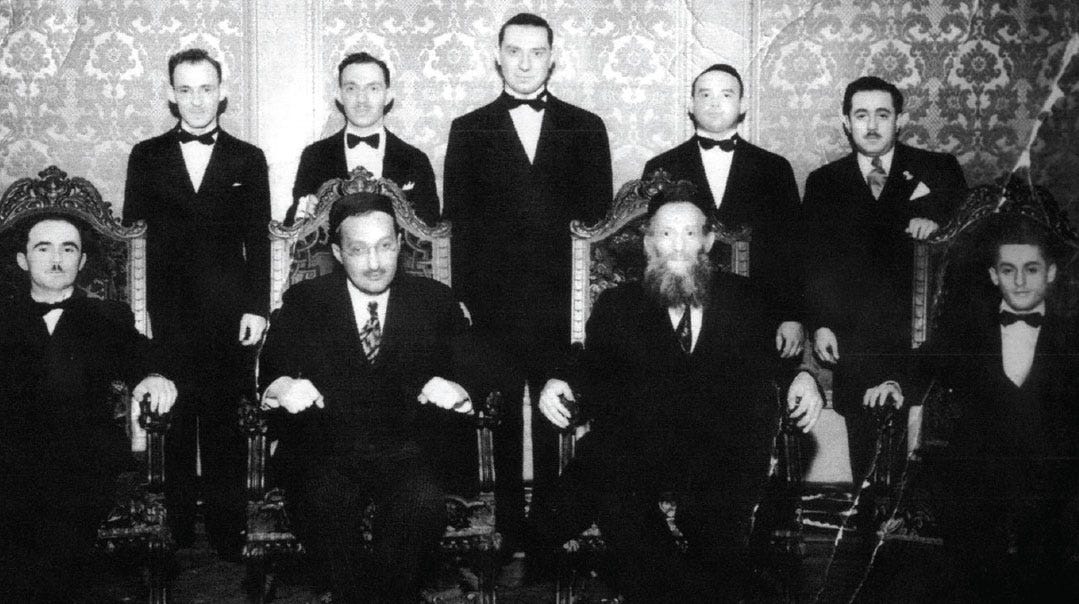What is a Rabbi? | Pinchas 5784
The first rabbi I ever met was my grandfather, Rabbi Moshe Bekritsky. At a time when few sent their children to study in Yeshiva, my grandfather insisted on it. He was originally a student in Yeshiva Torah V’Daas, where he studied with Reb Shraga Feivel Mendelowitz. Even though Reb Shraga Feivel completed rabbinic ordination he insisted that his students call him Mr. Mendelowitz, which my grandfather dutifully did his entire life. When Rav Dovid Leibowitz established his yeshiva, named after his great-uncle Rav Yisroel Meir Kagen, the Chofetz Chaim, my grandfather joined him. My grandfather formally became a rabbi at the first chag hasemicha, rabbinic ordination celebration, of the newly established Yeshivas Chofetz Chaim.
In the sole existing picture of the ceremony, Rav Dovid Leibowitz is seated next to the then-mashgiach of the yeshiva, Rav Chaim Pinchas Scheinberg, who was then still in his mustache era before becoming instantly recognizable for wearing many many pairs of tzitzis, a custom he adopted much later in life.
Most importantly, at the first chag hasemicha of Yeshivas Chofetz Chaim, they wore tuxedos, a tradition I would urge Yeshivas to consider bringing back.
Nowadays, particularly in the United States, getting the title “Rabbi” is a lot easier. Many incredible rabbis I know have not completed rabbinic ordination. It doesn’t take all that much to be called “Rabbi.” Still, my mother insisted I formally complete semicha before using the title—my grandfather worked hard for it, and so should I.
But what exactly is semicha and where did the tradition of semicha begin?
The story happens to begin in our parsha, Pinchas.
After detailing the laws of inheritance, Moshe turns to God and asks, who will inherit his leadership? The Jewish People, Moshe says, should not be left like a flock without a shepherd.
Take your hand, God instructs Moshe, and place it upon Yehoshua bin Nun in front of Elazar the Kohen and the entire Jewish People. And then God tells Moshe:
וְנָתַתָּה מֵהוֹדְךָ עָלָיו לְמַעַן יִשְׁמְעוּ כׇּל־עֲדַת בְּנֵי יִשְׂרָאֵל׃
Invest him with some of your authority, so that the whole Israelite community may obey.
Moshe does everything God instructs.
Well, sort of. God told Moshe to rest one hand on Yehoshua, and Moshe rested both of his hands.
What is the point of Moshe resting either hand on Yehoshua? And what exactly does Hashem mean when he tells Moshe, וְנָתַתָּה מֵהוֹדְךָ עָלָיו, invest some of your authority upon Yehoshua?
Rambam writes that Moshe resting his hands upon Yehoshua became the basis for all future semicha, rabbinic ordination.
So to truly understand the meaning of semicha, let’s explore the history of rabbinic ordination.
Read the rest on Substack, and listen to the full shiur above!

